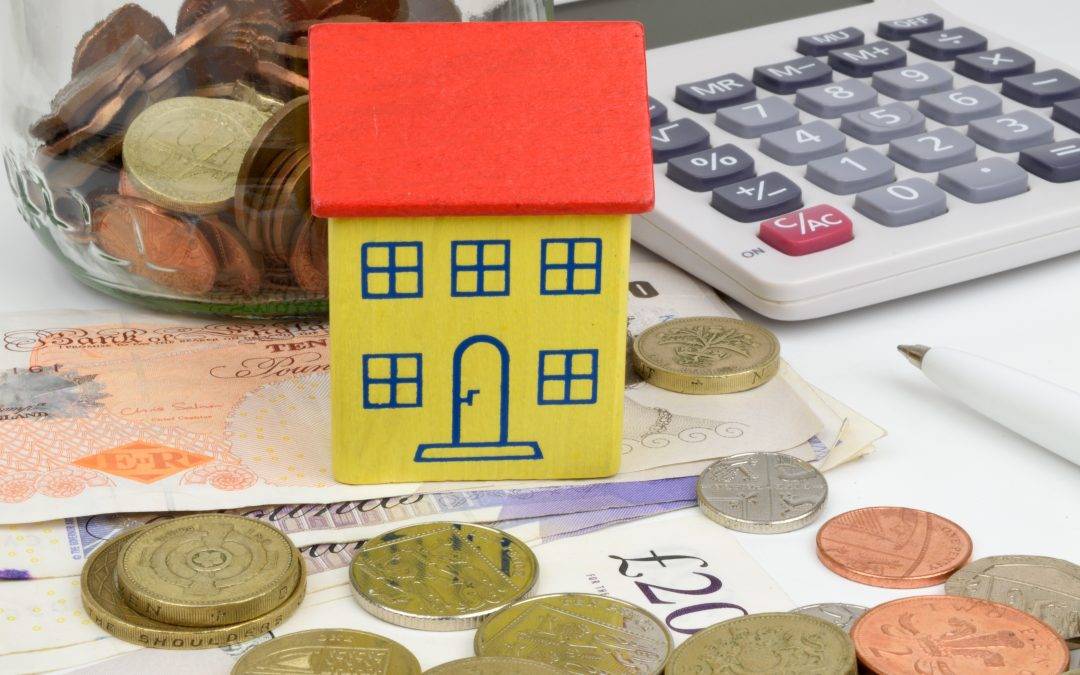Are you considering expanding your investment portfolio to include property rentals? Are you concerned about the complex admin involved? Let Landmark guide you through the process, clearly setting out the financing options, tax implications, and legal responsibilities that you will face as a landlord.
WHAT IS A BUY-TO-LET PROPERTY?
A buy-to-let (BTL) property is one purchased with the specific intention of letting it to tenants. There is considerable financial yield to be had from BTL investments but it is vital to be aware of all the factors involved before taking such an important step.
There are, of course, risks inherent in any property investment. The private rental sector brings additional taxes, increased regulations and greater costs but offers substantial profit for the shrewd investor. As with any investment it is key to weigh up the outlay as well as the potential income, and it is imperative to seek tax advice before making any decisions.
Renting out property takes careful planning, be prepared to invest your time as well as your money in the venture. If you are looking at the luxury end of the market, consider the greater maintenance and management costs involved with such high value property. Conversely a property at the other end of the market can end up costing you more than its value if it is a substandard construction.
You need a clear understanding of what you will need to put into such a project as well as what you can expect to get out of it.
In order to decide whether a property will be a viable and profitable investment, you need assess factors such as potential capital growth and rental yield.
Capital Growth
All property value increases or decreases over time, this is called capital growth or capital appreciation. It usually reflects fluctuations in the property market or changes to the property itself. Understanding your potential capital growth can help you decide whether to make improvements to the BTL property and what they should be or when and whether to sell it on.
Example:
A property is purchased for: £350, 000
The current market value is: £400,000
The capital growth is: (£400,000 – 350,000) = £50,000
Rental Yield
Rental yield is the value of the continuing return on investment of a property. It is vital to be aware of the potential rental yield before purchasing a BTL property. You can get an idea of the rental potential of your BTL by looking at other similar properties in the same area.
MORTGAGES, DEPOSITS, COSTS AND TAX RELIEF
You don’t necessarily need a nest egg or huge savings to invest in a potential rental property. Most landlords take out a buy-to-let (BTL) mortgage rather than part with all their hard-earned cash at once. These are straightforward and specifically tailored to the BTL property investment market.
Mortgages
A BTL mortgage enables you to borrow sum of money large enough to purchase a property for the express purpose of renting it out. They are similar to a standard residential mortgage in that offers and plans are based on the amount you can afford for a deposit and monthly repayments, but they usually require a larger deposit and involve higher interest rates. A typical deposit for a BTL is around 25% of the property value.
In order to establish the financial viability of any given BTL property or mortgage, lenders use a rental affordability calculator. This calculation can take personal income as well as the rental possibilities of the property into account against the potential loan amount. High street lenders typically expect the minimum monthly rental income of a BTL to equal 145% of the monthly mortgage payments on an interest-only loan, using a nominal rate of around 5%. This can be as low as 125% however, for basic rate taxpayers.
To qualify for a BTL mortgage, certain criteria must be met. Lenders usually have a minimum personal income requirement of £25,000 per annum. You must show that you can easily cover the costs of the investment; cost such as survey and solicitors’ fees, and Stamp Duty among others. Lenders rarely accept BTL mortgage applications from first time buyers, although there is a handful who will.
Stamp Duty Land Tax on Properties
In England and Northern Ireland Stamp Duty Land Tax (Stamp Duty) must be paid on properties above a certain value. This applies to both freehold and leasehold properties, either purchased with mortgage financing or outright.
If you purchase a residential property apart from your main residence, such as a second home or a BTL, you will have to pay a 3% surcharge on standard Stamp Duty rates.
Use our BTL Stamp Duty calculator to get an idea of how much Stamp Duty your BTL property will incur and see our Stamp Duty guide for more information.
Property and Income Tax
As BTL landlord/owner, you will have to pay Income Tax on the income you obtain from your property rental. Currently you are permitted up to £1000 allowance, certain expenses are also deductible from rental income.
Insurance
BTL mortgage lenders usually require you to have buildings insurance in place. It’s imperative to choose insurance that can accommodate any long term property plans you may have, for example if you intend to expand your property portfolio, choose a policy that allows for additional properties in the future. You may decide to provide your tenants with contractual terms that make you responsible for contents insurance and liability insurance. Forward planning in the early stages will help you future-proof your investment.
Survey Fees
A survey is a legal necessity when purchasing any property. The fees can cover anything from the cost of a simple property valuation to a complete structural survey. The degree of investigation necessary for your BTL property will depend on your lender, the terms of the mortgage you’re applying for and the property you’re purchasing. In brief, a standard valuation will confirm the value, give a rental value assessment and determine whether the property is a viable security for the loan. A homebuyer’s report will give you everything that a standard valuation will, plus a report on the actual condition of the property.
The FCA does not regulate Survey and some forms of tax planning
For Survey and tax planning we act as introducers only
Maintenance Fees
BTL maintenance costs can come as a surprise if you’re not prepared. As well as managing the rental income, as a landlord, you are responsible for maintaining the property. The demands on your time and finances can soon become complicated. You can consider paying a letting agent to manage the property for you, particularly if you have several investments.
Letting agents naturally entail certain costs, they charge a percentage of the rental income plus VAT. Nonetheless, they significantly reduce the complex administration associated with BTL investments.
For a clear idea of how and where to obtain the best BTL mortgage plan and how much you might have to pay in fees, tax, Stamp Duty, insurance, etc, .
WHERE IS IT BEST TO BUY?
In terms of location, a lot depends on your budget, home location and future plans. The UK House Price Index will show you average house prices across the UK and in specific areas. You can get a reasonable estimate of your rental expectations in any given spot from monthly government-published statistics on rental prices. You can’t beat a bit of field research, the best picture will often come from visiting the area and talking to a good cross section of local estate agents, specialising in both selling and letting.
As well as the finances, you need to assess the local demand for rental property. The population demographic, local infrastructure, local business profile, economic sustainability, these are all important factors governing who wants to rent what in any given locale. For example, a high density of young people is likely to indicate an equally high demand for smaller property rental, thus offering a great opportunity for BTL investment.
You will need to be able to reach your BTL property easily, either for regular maintenance or even in an emergency. Unless you intend to hand the entire management of it over to an agent, it’s best to buy a property within easy reach of your home base.
WHICH PROPERTY IS RIGHT FOR ME?
When buying to let, it’s important to keep in mind that you’re not buying for yourself. You are buying a home, but one for person or persons unknown, don’t let personal preference rule over financial common sense. Focus on the investment benefits, imagine who your tenants might be. Don’t forget the following points during your property search.
Get Some Expert Local Knowledge
Local estate agents are best placed to offer useful insights to the property market in your chosen area. They have access to suitable properties and can offer valuable information on the local rental market to help you pinpoint your ideal BTL property.
Set a Budget
Your budget will be the greatest consideration governing the type and location of properties suitable for your BTL project. Take the time to work out exactly what you can afford and what you can expect from rental income. Be realistic. This will give you a clearer picture of what type of property you are looking for and where you are most likely to find it.
Research Your Mortgage
The cost of your BTL mortgage will probably be the most important factor in your financial calculations. Most people apply for a BTL mortgage to fund their investment, which means budgeting for a deposit, typically a minimum of 25% of the purchase price. We have access to a wide variety of lenders offering a broad range of BTL mortgage plans.
Double Check Your Finances
Even the best prepared property investments can experience unexpected costs. Make sure you have the financial security to cover such emergencies. It’s equally important to budget for periods when the property might be empty, between tenancies, for example. This may cause you to rethink your plans but it will provide a sound base to build on.
Understand Your Tenants
Think about the type of person who will want to rent your property. Families will want to live close to schools – the younger the children, the closer they will want to be; young professionals will look at the proximity of transport hubs; students and those at the very start of their working life will look for shared accommodation near to their university or work locations. Create an average renter profile for properties in your budget range and or target demographic, see how well you can match their property requirements.
SECURING A BUY-TO-LET MORTGAGE
BTL lenders will base you suitability for a loan on your capacity to afford a deposit and repayments as well as the expected rental income of the property. Lenders typically want to see rental potential between 125% and 145% of the interest repayments, not the capital repayments, although these requirements will vary among different lenders. Your overall financial security could also have an influence on the lender’s criteria regarding your suitability for this type of loan.
Your lender will conduct a “stress test” to establish whether you are able to maintain repayments in the face of interest rate fluctuations and other unexpected occurrences. They want to make sure that this will be a sound investment for them as well as for you.
Most BTL mortgages carry a 25% minimum deposit requirement. The greater the deposit, the greater the variety of mortgage products available to you and usually the cheaper the lender’s interest rate.
As with any property investment, talking it through with a broker is key to quickly and easily finding the most suitable route for your buy-to-let property journey
YOUR ROLE AS A LANDLORD
As a landlord, your prime responsibility to your tenants is to ensure that your property is safe and energy efficient. You must also confirm that you will hold your tenants’ deposit securely and legally. Here are some more major areas of responsibility that landlords must take on.
Gas Safety Certificates
It is a legal requirement for landlords to have a gas safety certificate, you will need to contact a Gas Safe-registered engineer to carry out an initial assessment and all subsequent safety checks. You are legally obliged to get a gas safety check every 12 months and provide your tenants with a certificate. You must also have a gas safety inspection within 12 months of installing any new gas appliance in your property.
Electrical Safety Checks
While there is no legal obligation for landlords to have an official certificate of electrical safety, there is legislation in place which requires you to ensure the electrical equipment in your property is safe to use.
Smoke and Carbon Monoxide Alarms
As a landlord you are required to install at least one smoke alarm on each floor/storey of the property and a carbon monoxide alarm in any room containing a solid fuel-burning appliance eg. wood, coal or biomass. At the start of each new tenancy, you or your letting agent must ensure that each alarm is working correctly.
HMO Licences
If you rent one property to three or more tenants who form two or more households, sharing a kitchen and bathroom, you might be required to apply for an HMO licence from your local authority. Lenders often have separate mortgage plans for HMOs so doublecheck with your broker before choosing your BTL mortgage plan.
Deposits
You are legally obliged to put your tenants’ deposits in a government-authorised deposit protection scheme. The tenancy deposit scheme protects both tenants’ and landlords’ interests and can act as a mediator in the case of any disputes about the return or retention of a deposit.
SELF-MANAGING YOUR PROPERTY
Advertising your property on the UK’s largest letting portals eg. will expose it to a huge audience of potential renters. They also enable you to easily self-manage your property which will save you spending money on a property agent.
Self-management of your rental property also allows you greater control over things like tenant fees, benefitting you by giving you the opportunity to customise your tenancy policies to attract your preferred tenant type. You can also relax some of those policies, such as the keeping of pets, for the right tenants. If you do choose to use a property agent, make sure you ask them about potential tenant fees.
Self-managing your property can establish a long-term, friendly, professional relationship that benefits both you and your tenants. If you’re still unsure whether property self-management is right for you, read on, as we lay out the major considerations.
Time management
It can be tough, manging a healthy work-life balance, giving the necessary attention to your job, family and social life; adding the demands of property rental to this mix isn’t always advisable. Self-managing your BTL property is not necessarily out of reach, if you can make yourself accessible by phone and email.
Distance
If the distance between your home and BTL property means you would struggle to attend viewings, inspections or maintenance calls then it’s not really viable to do everything yourself. Or necessary. You can establish links with a pool of trusted, reliable tradespeople in the local area to deal with any issues when you’re unavailable.
Being a people person
Perhaps you prefer the hands-off approach, providing the financing and letting others take care of the admin. Or perhaps you’re just not a people person. In which case, take the time to find a reputable letting agent, create a tenancy agreement that you are both happy with and leave the day to day running of your BTL property to them.
WHAT’S NEXT?
If you feel you’re financially prepared and mentally ready to enter the buy-to-let market, give us a call and our one of our friendly, dedicated, specialist brokers will discuss your investment and find the best plan for you.
0203 773 7299
info@landmarkprivatefinance.com
YOUR PROPERTY MAY BE REPOSSESSED IF YOU DO NOT KEEP UP REPAYMENTS ON YOUR MORTGAGE OR ANY OTHER DEBT SECURED ON IT.









Recent Comments